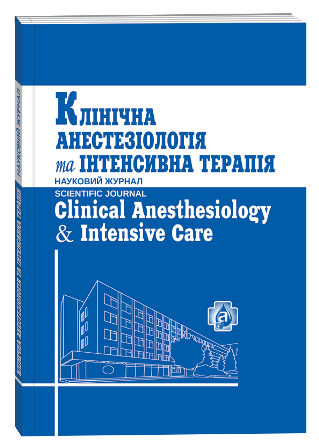THE DIAGNOSTICS OF SEPSIS IN PREGNANT WOMEN AND DURING POSTPARTUM PERIOD: THE CONTROVERSIAL QUESTIONS OF SURVIVING SEPSIS CAMPAIGN (INTERNATIONAL GUIDELINES FOR MANAGEMENT OF SEPSIS AND SEPTIC SHOCK), UPDATED IN 2016
Keywords:
sepsis, septical shock, pregnancyAbstract
Sepsis and septical shock clinical criteria were agreed in Surviving Sepsis Campaign: International Guidelines for Management of Sepsis and Septic Shock 2016. Despite the imperfections of SIRS criteria (low specificity), their sensitivity reaches 100%. According to modern ideas, sepsis is a systemic inflammatory response to infection (SystemicInflammatoryResponseSyndrome — SIRS) always associated with the presence of infectious agent in the body. Clinical and metabolical manifestations of sepsis are similar to symptoms and criteria of system inflammatory response syndrome. Physiological features of pregnant women are making adjustments to the classical picture of diagnosis and treatment. In the first trimester of pregnancy 15% of women are suffering from dyspnea. Increased heart rate is normal manifestation of the third mechanism of regulation of cardiac output (volume of circulating blood — first, the contractile ability of the myocardium — second). Increase in the number of leukocytes in peripheral blood of pregnant/postpartum women is a physiological process and creates difficulties in diagnostic process. The aim of study was to determine peculiarities of sepsis and septical shock in pregnant and postpartum women according to instructions of Surviving Sepsis Campaign: International Guidelines for Management of Sepsis and Septic Shock: 2016. The problem of sepsis is currently very severe in obstetrics. In now days, infections occupy third place in the structure of maternal mortality and make up about 15%. Systemic manifestations of sepsis/septical shock in pregnant/postpartum women (including the development of multiple organ dysfunction)can significantly outpace local changes of purulent source. If the primal source of infection is located in the uterus, the development of septical shock is not always accompanied by symptoms of “classical” metroendometritis, making it difficult to diagnose. It also detains radical sanation of the infectious source contributing to progression of multiple organ dysfunction. In 2001 E. P. Rivers et al. published an article in highly ranked journal N Eng J Med, which is cited by various authors until now. The whole algorithm of infusion and inotropic therapy was developed on its basis for patients with sepsis and septic shock. Despite this, in present time many authors doubt in expediency of achieving CVP 8-13 mmHg (J. H. Boyd et al 2011; M. Cessoni et al 2011; Marik P. E. et al 2008)., sodium ions accumulate in the extracellular space (interstitial and intravascular)in pregnant; as a result tissues become hydrophilicandtissue “phisiological edema”develops. Given the presence of capillary loss syndrome in pregnant/ postpartum women (preeclampsia / eclampsia) controversial is the question of the qualitative composition of the infusion therapy. There are no safe antibiotics for pregnant women according to Food and Drug Administration — FDA (USA). Therefore, the problem of antibiotic therapy in these patients also have its own features. Physiological features of pregnant woman are making adjustments to the classical picture of diagnosis and treatment of sepsis/septical shock in this group of patients. The aim of study was to determine peculiarities of sepsis and septical shock in pregnant and postpartum women according to instructions of Surviving Sepsis Campaign: International Guidelines for Management of Sepsis and Septic Shock: 2016. The problem of sepsis is currently very severe in obstetrics. In now days, infections occupy third place in the structure of maternal mortality and make up about 15%. In this article we have discussed the results of the diagnosis and treatment of 14 pregnant /postpartum women with sepsis, who came to the clinic of anesthesiology and intensive care of the Lviv Regional Hospital from 2010 to 2016. Chorioamnionitis and endometritis were the main reasons of peritonitis and sepsis. Intensive therapy (volemic resuscitation, cardio-respiratory support, antibiotic therapy) and surgical intervention (eliminating the causes of peritonitis, sanitation and drainage of the abdominal cavity) were conducted to all the patients. The patient’s general condition was evaluated by APACHE II scale at (14.5±1.5) points and multiple organ dysfunction was evaluated at (5.0±1.0) points by SOFA scale.
References
Особенности септического шока в акушерстве / А. В. Куликов, А. В. Спирин, А. Л. Левит, О. Г. Малкова // Анестезиология и реаниматология. – 2012. – № 6. – С. 58–62.
Шифман Е. М. Гиповолемический шок во время беременности / Е. М. Шифман // Анестезиология и реаниматология. – 2012. – № 6. – С. 63–66.
Серов В. Н. Неотложная помощь в акушерстве / В. Н. Серов. – М. : ГЭОТАР-Медиа. – 2011. – 254 с.
Surviving Sepsis Campaign: international guidelines for management of Sepsis and septic shock / A. Rhodes, L. Evans, W. Alhazzani [et al.] // Critical Care Medicine. – 2017. – № 45 (3). – Р. 1–67.
Fluid resuscitation in septic shock / J. Boyd, A. Avila, C. Eliezer [et al.] // Crit. Care Med. – 2011. – Vol. 39, № 2. – P. 259–265.
Marik P. E. Does the central venous pressure predict fluid responsiveness? An updated metaanalysisand a plea for some common sense / P. E. Marik, M. Baram, B. Vahid // Crit. Care Med. – 2013. – Vol. 41. – Is. 7. – P. 1774–1781.
Сessoni M. What is fluid challenge? / M. Cecconi, A. K. Parsons, A. Rhodes // Currentopinion in CC. – 2011. – Vol. 17. – P. 290–295.
Fluid re suscitation in septic shock the effect of increasing fluid balance on mortality / F. Sadaka, M. Juarez, S. Naydenov, J. O’Brien // J. Int Care Med. – 2013. – doi:10.1177/885066613478899







